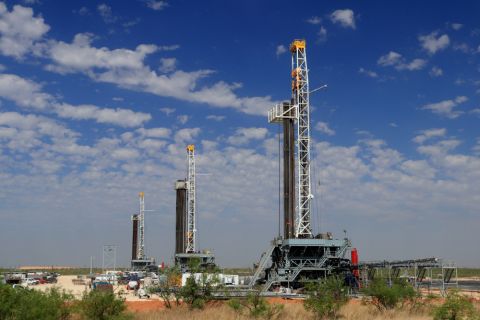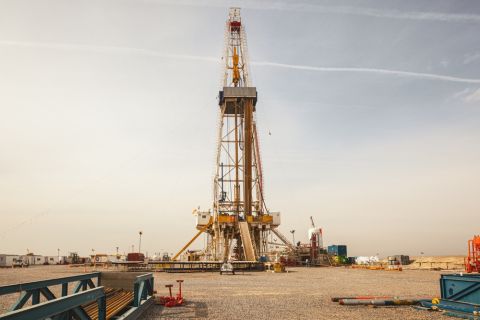Protesters opposed to hydraulic fracturing have intensified their efforts with the No Dash for Gas protest that kicked off over the weekend in the UK. Hundreds converged in Balcombe, West Sussex, at the Cuadrilla Resources drillsite, according to news reports. A Getty Images photo shows police trying to cut through a pipe glued to one of the arms of a protester who formed a barrier while other protesters blocked the entrance of Bell Pottinger, a London PR company that works with Cuadrilla. Reuters reported that six people were detained Monday after gluing themselves to glass doors at the PR firm. The Guardian also reported Monday that 20 protesters blockaded Cuadrilla’s headquarters with their bodies. Two of the protesters actually made it inside the building with banners saying “Reclaim the Power” and “Power to the People.” Some protesters chained themselves to each other at the drillsite’s entrance. Other protesters were reportedly more peaceful, playing drums and singing. Information on No Dash for Gas’ website claimed protesters also visited the country home of George Osborne’s father-in-law Lord Howell, a supporter of fracing. In all, 36 people were detained in Balcombe and London, according to the Reuters report. The protesters favor renewable energy rather than fracing, and they have been quite effective in getting their message out. Given Cuadrilla admitted in 2011 that it is highly probable that fracing on its Preese Hall-1 well triggered two small earthquakes, it is understandable that folks are concerned about the possibility of what could happen. There is nothing wrong with standing up and speaking out for what you believe in, as long as actions are based on accurate information, are legal, and no one resorts to violence. However, Reuters also reported that death threats have been sent to the head of Cuadrilla. Prior to the No Dash for Gas protest, Cuadrilla heeded the advice of Sussex police and scaled back its exploration drilling operations. And that was a good move on the company’s part. With the presence of workers at the drillsite, tensions could have easily escalated, possibly resulting in even more arrests. The company said it plans to resume operations at the site as soon as it is safe to do so. Currently, exploration work at Balcombe involves drilling a conventional oil well, according to Cuadrilla’s CEO Francis Egan. The company plans to take underground rock samples after drilling a vertical well approximately 914 m (3,000 ft) deep. A horizontal leg of 762 m (2,500 ft) also could be drilled from the vertical well, depending on the results from the vertical sampling. But neither the vertical nor the horizontal well will be fraced. “External groups protesting against hydraulic fracturing at Balcombe do so without any work proposal from Cuadrilla to judge,” Egan said in a statement on the company’s website. “Any hydraulic fracturing proposal would require a detailed environmental impact assessment, public consultations, and multi-agency regulatory reviews, all of which would be available for scrutiny.” But it is only a matter of time before fracing commences – if not by Cuadrilla, which is seeking permission to frac and test shale at sites in Flyde and Grange Hill, then by some other company. The British Geological Survey-conducted study released earlier this summer revealed England’s Bowland basin is believed to hold up to 589 Tcm (1,300 Tcf) of shale gas reserves, and other areas in the UK have shale oil and gas potential. Plus, the UK government has introduced an allowance that more than slashes in half the tax on shale production income in a push to attract developers. Let’s hope that the anti-fracing movement stays civil. It will certainly be a situation to watch as the UK moves to develop its shale resources. Contact the author, Velda Addison, at vaddison@hartenergy.com.
Recommended Reading
E&P Highlights: May 13, 2024
2024-05-13 - Here’s a roundup of the latest E&P headlines, with a couple fields coming online, as well as new contract awards.
SM Energy Targets Prolific Dean in New Northern Midland Play
2024-05-09 - KeyBanc Capital Markets reports SM Energy’s wells “measure up well to anything being drilled in the Midland Basin by anybody today.”
Vår Selling Norne Assets to DNO
2024-05-08 - In exchange for Vår’s producing assets in the Norwegian Sea, DNO is paying $51 million and transferring to Vår its 22.6% interest in the Ringhorne East unit in the North Sea.
Crescent Energy: Bigger Uinta Frac Now Making 60% More Boe
2024-05-10 - Crescent Energy also reported companywide growth in D&C speeds, while well costs have declined 10%.




